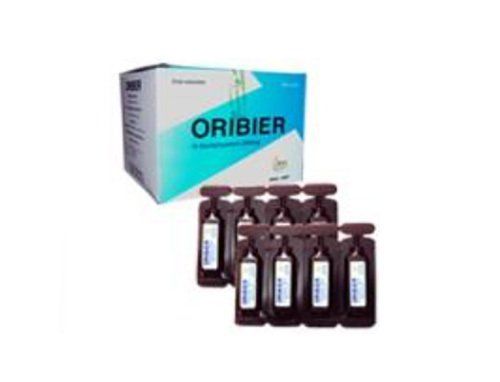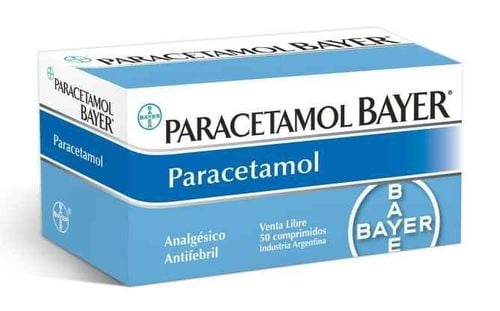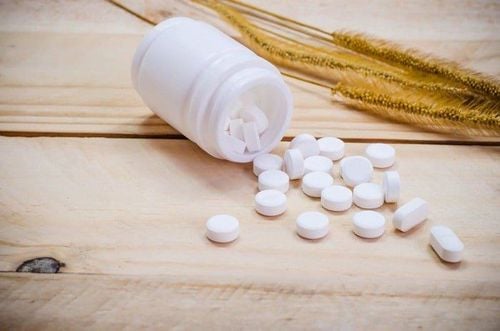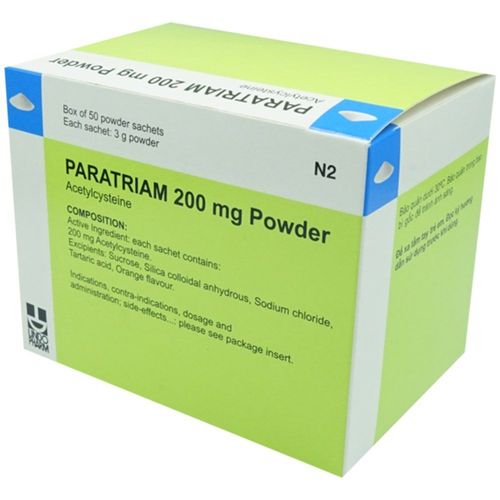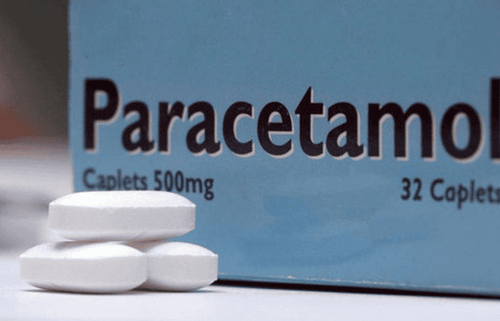This is an automatically translated article.
Taking efferalgan pain reliever a lot is harmful, although this is a commonly used drug, not everyone knows it. As an ingredient in paracetamol, overdose cases are common and can occur accidentally or in cases of self-harm. A significant overdose can lead to permanent liver failure when not treated promptly.1. How does Paracetamol harm the body?
Paracetamol is usually taken by mouth and comes in a variety of forms, such as in tablet, tablet, dissolved, and liquid forms. They will go to the stomach and intestines into the body, helping to relieve pain and reduce fever. The paracetamol is then inactivated before being released from the body.
About 20% of the drug is processed in the intestinal wall and the rest in the liver. As a result, small amounts of the toxic compound (n-acetyl-p-benzoquinone imine, or NAPQI) are formed in the liver but are quickly detoxified by a substance called glutathione. However, in overdose, the stores of glutathione may be depleted and therefore not sufficient to remove the increased amount of NAPQI. NAPQI can then build up and damage the liver.
Paracetamol is the most common drug in overdose, which can lead to liver failure despite the use of hepatoprotective drugs. Severe and acute liver failure can cause rapid death.
2. What are the risks leading to paracetamol overdose?
There are many reasons for a person to overdose on paracetamol, be it intentional or accidental - toddlers and people with low vision, for example.Others take higher than recommended doses of paracetamol to relieve pain for a few days. These people may not have suicidal thoughts and sometimes may not even realize they are harming themselves until they start to feel unwell.
In which, some subjects will have a higher risk of liver damage caused by paracetamol than others, if they have one of the following characteristics:
Are taking certain drugs, such as rifampicin, phenobarbital, phenytoin, carbamazepine and alcohol. Being malnourished - for example due to a chronic illness or eating disorder. Have alcoholic liver disease.

Người bị bệnh gan do rượu có nguy cơ tổn thương gan do paracetamol
3. What are the symptoms of paracetamol overdose?
Overdose of paracetamol may be asymptomatic for the first day. Feelings of nausea and vomiting can sometimes occur several hours after an overdose.After 24 hours, the person may have pain under the right rib (where the liver is located) and may have a yellowish appearance on the whites of the eyes and skin. In addition, the person may also have other symptoms including:
Confusion and disorientation (hepatic encephalopathy). The kidneys may also be affected by decreased urine output and renal failure may occur. Low blood sugar (hypoglycemia) may occur. There may be a build-up of acid in the blood that causes the patient to breathe faster.
4. How to evaluate paracetamol poisoning at the hospital?
The doctor approaching the patient will evaluate the full information about paracetamol poisoning, including:Number of tablets taken Time of drug overdose The dosage form used, in the form of tablets, tablets, liquid or soluble Other drugs also taken at the same time Any alcohol taken at the same time Any suspicions of suicide, such as previous suggestive signs, leaving a suicide note ... Besides, the doctor also needs to perform more blood tests, including:
Quantification of paracetamol concentration. The results will show how much paracetamol has been used. Liver function tests: this is a group of blood tests that show how well the liver is working. Initially, they may be normal. When they are elevated, this indicates that the liver cells have died and liver failure is possible. A blood clotting test (called a prothrombin time) is an earlier and better indicator of liver damage. Prothrombin time: is part of the clotting tests that will be ordered, this tells how 'thin' the blood is. The liver makes factors important for blood clotting. When the liver is damaged, prothrombin time increases. The higher the level, the more severe the liver involvement. This indicator will also be checked multiple times. Kidney function tests: these are blood tests that look at the function of the kidneys, showing if there is any kidney damage or kidney failure. Low blood sugar (called hypoglycemia) can occur when the liver fails. A fingertip blood sugar sample will need to be taken every hour. Arterial blood gas: Taking a sample of arterial blood shows the acidity of the blood. Acidity is very closely controlled by the body and in the case of paracetamol overdose, acidity can rise prematurely. These patients have a more severe condition and will rapidly develop liver failure.
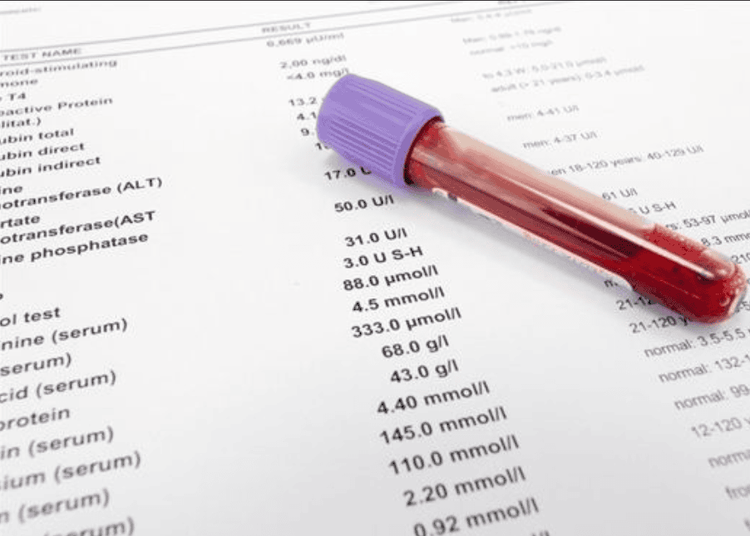
Kết quả xét nghiệm máu giúp bác sĩ đánh giá ngộ độc paracetamol
5. How to treat paracetamol overdose?
If a patient with a paracetamol overdose is brought to the hospital with an unstable condition - such as low blood pressure - or severe liver failure, he will need to be treated in the intensive care unit.
Paracetamol blood levels will be a factor to help guide treatment with emergency intravenous or oral N-acetylcysteine. This is a liver protectant and helps restore glutathione levels. It can also help the liver fight the toxicity caused by paracetamol poisoning. However, the drug is only most effective when taken within eight hours of a paracetamol overdose. In cases where there is ongoing liver damage from paracetamol overdose, this treatment may need to be prolonged. N-acetylcysteine is used for children and pregnant women. In pregnant women, paracetamol overdose can also affect the liver of the fetus and N-acetylcysteine can also help prevent this.
The main complication after paracetamol overdose is liver failure. Patients may need to be referred to a specialized hepatobiliary unit if blood test results confirm liver failure as well as correction of associated metabolic disturbances.
Urgent liver transplantation is the only salvific treatment when severe irreversible liver failure occurs.
Finally, all patients will need to see a psychiatrist before discharge, to rule out the possibility that paracetamol overdose was voluntary.
In summary, paracetamol is a commonly used over-the-counter pain reliever. Accordingly, cases of paracetamol overdose are also common. Therefore, it is necessary to adhere to the instructions for taking the drug and only use it when absolutely necessary; especially for the elderly and children, it is necessary to carefully store the medicine and follow the safety instructions.
Please dial HOTLINE for more information or register for an appointment HERE. Download MyVinmec app to make appointments faster and to manage your bookings easily.
Articles refer to sources: drugs.com, webmd.com, nhs.uk



